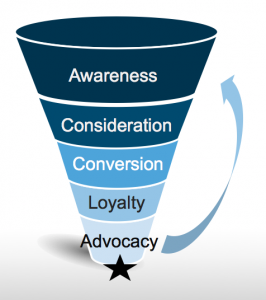In the heyday of 2017, you couldn’t say the word “crypto” or “blockchain” without a bunch of people joining the conversation. Some would tell you it’s all but a hoax. Others would say it’s the next major innovation and if you’re not a supporter then you’re going to be left behind. Thinking about those two people – the supporter and the detractor – in the context of the “Chasm” described by Geoffrey Moore in his book Crossing the Chasm, their beliefs become much easier to understand. The people mocking the technology are likely in the ‘Late Majority’ or ‘Laggard’ category of adopters, whereas those who love everything crypto and blockchain are the small group of ‘Innovators’ as defined by Moore.
One of the most common insults hurled at new technology is that it’s nothing but a buzzword. What does “crypto” really mean, for example? If you don’t know or don’t think the technology has merit, it’s easy to write off those early adopters as people obsessed with a buzzword. For John Mizzi, the chief strategy officer at Bond.One, it’s all about buzzwords – as long as they are the right ones, at the right time, for the right people. When it comes to increasing adoption – and selling more – of a new technology, using buzzwords is necessary. The only question is which buzzwords should be used.
Experimentation finds benefits users will care about

The earliest innovators will be on your bandwagon based purely on the potential of the technology. Everyone else wants to know what’s in it for them and what benefit they will get. That makes testing the impact of new technology in multiple ways crucial for success. For highly regulated environments like financial services, Mizzi said ‘sandbox’ environments are a necessity.
A sandbox environment, said Mizzi, “is where emerging technology companies can work with banks in a safe space. They can roll out pilot programs [and] actually do stuff without worrying about [a lawsuit].”
Despite the potential issues with removing new product development from the core business, a sandbox environment is incredibly helpful for identifying how a technology can provide value to companies.
For example, Bond.One uses blockchain technology to make data transfer easier for banks. This could mean sending contracts, sending money, or other sensitive files. The security of blockchain technology makes it an attractive potential tool, since many deals in the financial world lack transparency and security for all stakeholders. However, if the potential benefit for mass adopters is that the technology can facilitate transfers from one organization to another, a test of sending information from one department to another within the same business doesn’t actually prove the concept. It proves the technology works, but not the business proposition.
With any new technology, proving the technology is capable rarely enables mass adoption. That’s just step one, usually for the earliest adopters and innovators. It’s proving legal, regulatory, and business proof of concepts that will get people to pay attention, according to Mizzi. After all, those are the real pains most people face, not a lack of technology.
Partnerships increase credibility and proof points

Identifying the right legal, business, and regulatory concepts to prove is difficult to do alone. If you’re solving a problem with technology, you may not have legal expertise on your team. Or you may know what problem your end-user faces, but you can’t necessarily prove the business concept by yourself.
This is where partnerships become valuable. They not only speed things up, but often provide insight you may not have found elsewhere.
“We’re taking all of the conversations and feedback that we received from our partners and baking it into our solution,” said Mizzi. “So by growing with us, you benefit from the shared knowledge and expertise of all the partners that we have connectivity with.”
When that happens, you have even more incentive for mass adoption. Continuing the Chasm model, there’s a middle group between the earliest innovators and mass adoption: the Early Adopters. These people grasp the concept of the technology but are more skeptical about its promises. They want to see some early insight and benefit before jumping on – and these people make perfect partners. Partnering with Early Adopters helps you build the credibility and scale that mass adopters look for when trying new things.
“You can build [new technology] yourself, but then you’re limiting your perspective to the brains within the four walls of your organization,” said Mizzi.
Use concepts people know to drive more adoption

When talking to the earliest innovators, using buzzwords around the technology such as “blockchain” or “crypto” is likely to get them excited. They understand what those words mean or have bought into the potential of the technology. On the flip side, senior bankers who might benefit from blockchain’s security and transparency either don’t know all the details or don’t care – they care about making money and not getting sued.
If you want to capture the mass adopters, it’s not a matter of ditching buzzwords altogether. It’s a matter of changing to buzzwords that make sense to them. For early adopters, words like “crypto” make sense. For later-stage adopters, words like “efficiency” make a lot more sense. In that way, the technology becomes a tool to reach a business end – and that’s where you get the idea that a technological proof of concept is only step one. It’s proving the regulatory, legal, and business concepts that will get mass adoption.
“I ground the efficiencies and opportunity of what we can accomplish in the nomenclature of our end user,” said Mizzi. “… We can glide through conversations much more efficiently when we’re talking in concepts that people have already wrapped their heads around.”
Business & Finance Articles on Business 2 Community
(85)








